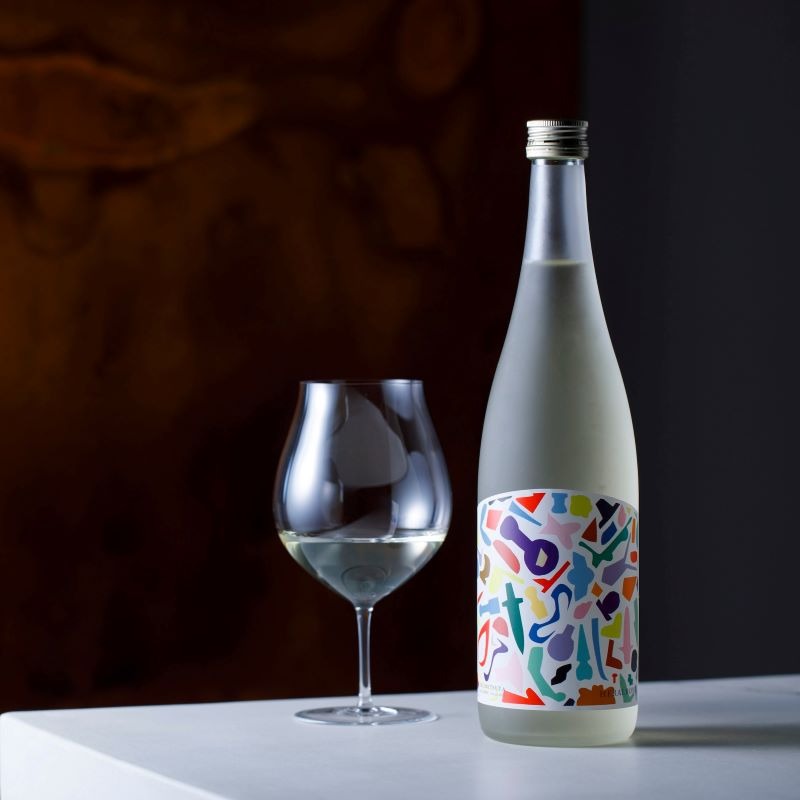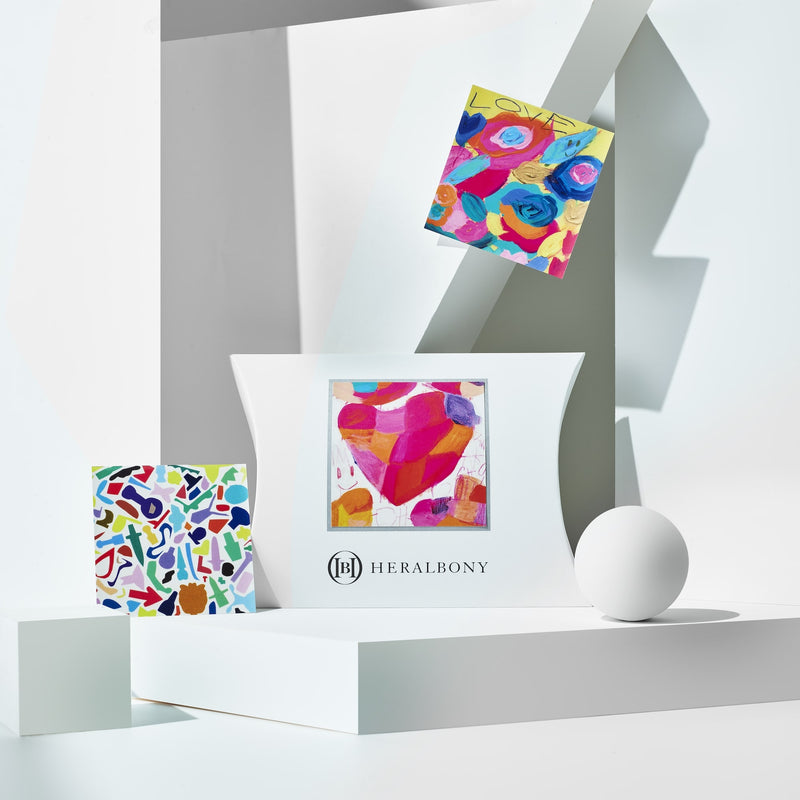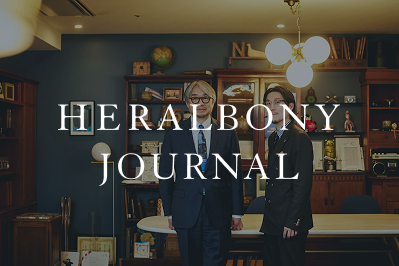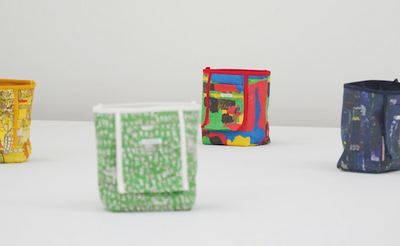[Yayako Uchida x Hiromi Kurosawa] A work that gets "likes" from everyone is an illusion. What art can do in an age of excessive explanation

Yaeko Uchida is a writer. She has been drawn to art since she was a child, and through her mother, Kirin Kiki's friendship, she has had connections with a variety of artists. She currently serves as the narrator for the program "no art, no life" (NHK Educational TV), which introduces artists who create unique artworks. In June 2024, she will become co-director of the Mugonkan Museum, a memorial museum for fallen art students in Nagano Prefecture.
Following on from the first part, Yayako Uchida and Hiromi Kurosawa, chief curator at the 21st Century Museum of Contemporary Art, Kanazawa and advisor to HERALBONY, will philosophize about the word "art."
>>Click here for the first part: Rather than "understanding," it's "touching." How to approach art that plays with your body and soul
 Many of HERALBONY's contracted artists have both intellectual disabilities and autism. Many of their works are the result of stereotyped behavior (the constant repetition of the same behavior that brings calm and security to the mind), a characteristic of autism. Is there a boundary between artistic expression that is born from such daily ritualistic activities and artistic expression that is honed through repeated training? This question is the starting point of the conversation between the two artists in the second part of this series.
Many of HERALBONY's contracted artists have both intellectual disabilities and autism. Many of their works are the result of stereotyped behavior (the constant repetition of the same behavior that brings calm and security to the mind), a characteristic of autism. Is there a boundary between artistic expression that is born from such daily ritualistic activities and artistic expression that is honed through repeated training? This question is the starting point of the conversation between the two artists in the second part of this series."This is not art"? Why draw the line?

Yaeko Uchida (hereinafter, Uchida) : My mother took me to various art museums since I was a child, but the first one I paid for and went to was the Art Brut Collection in Switzerland when I was in high school.
(*Art Brut Collection: A museum of "art brut," art created by people who have not received special artistic training and who are not bound by preconceived notions of technique or style. It also includes works by artists with disabilities.)
At the time, I didn't know much about what "art brut" was. I had chosen an art course in high school, and my teacher recommended that I go on a weekend, so I was blown away by the incredible energy of the works there. Perhaps because I was in the most impressionable period of my adolescence, I was inspired by all the different forms, colors, materials, and expressions. From then on, I started going there many times on weekends. So for me, it wasn't so much that I had discovered "art by artists with disabilities," but rather that it was the experience of encountering something incredible that stuck with me.
However, when I was asked to narrate "no art, no life," I told a friend, who said, "I don't think of that kind of thing as art, and I'm not interested in it," which came as a huge shock. My friend had graduated from a prestigious art school in the United States, so perhaps she thought that only people who had received a certain level of artistic education could be considered artists. However, for me, it was a shock to discover that there exists a value system that says that something that gives me a sense of beauty and energy beyond my imagination, something that I thought of without hesitation as "art," is not art. Even now, I'm not sure how I should have responded to my friend.
Kurosawa Hiromi (hereafter Kurosawa) : I see. First of all, personal likes and dislikes are different from the issue of boundaries in society. Preferences are a matter of personal freedom. If Uchida's friend meant that she "doesn't really like it," then it would be strange to press her by asking, "Why don't you see the good points of this work?" It's simply a matter of "I see, so you don't like it. I like it . " But perhaps what's bothering Uchida is that she sensed a different nuance in her friend's words than the issue of "likes and dislikes."
Uchida : That's right. The implication was that they had no artistic training and didn't consider genres like art brut or outsider art to be art, so I was puzzled as to why there was such a boundary between "this is art and this is not art."
"Circle" that utilizes technique and "Circle" that is like breathing

Kurosawa : Perhaps your friend places importance on the presence or absence of technique, the ability to control one's own expression through repeated training. Students studying art at universities and other educational institutions sketch every day to hone their skills and improve their ability to depict one thing and paint the way they want to. In contrast, there are artists like Tadanori Yokoo, who we mentioned in the first part -- Yokoo has trained repeatedly and acquired high levels of skill -- who express themselves with a particular sense of "I have to paint this" and with a natural, breathing quality. Some people may be sensitive to this difference.
Uchida : I see. But how does that differ when you look at the end result of the expression? For example, a circle drawn in one stroke after diligently studying and devising the composition and design, with the idea "I want to draw this," and a circle drawn today by someone who draws the same circle every day. Can you compare those two circles and decide which is better? I think both are precious, without even needing to compare them.
Kurosawa : You can put two circles side by side and compare them and ask yourself, "Which do you like better?" But when it comes to the activities of the people who have been involved with those circles, you can't draw a line between good and bad, or which is worthy of being art. ... If you explain it carefully, I think your friend will understand.
Uchida : I was so shocked at the time that I went home feeling dejected (laughs). But you're absolutely right. People are free to like and dislike things. It's precisely because differences arise that things are interesting. A world where everyone looks at the same thing and says, "This is great," is an illusion and a boring one.
Kurosawa : Enjoy and respect differences. Some artists have strong convictions. Some happen to be people who aren't labeled as disabled or have never been diagnosed with a disability. Even if you knew that, would it have any effect on how you viewed their work?
It is we, the curators, who are the ones communicating about the works that need to be careful . For example, the more we try to explain a work, the more we can end up forcing the artist or work into a certain framework. If we create an exhibition with the hope of breaking down existing groupings, but then slap a common label on top of it, we will end up grouping people twice. Isn't it the case that someone who wants to eliminate gender boundaries ends up featuring a female artist and naming it a "feature exhibition of female artists"? Isn't it just creating a level of inconvenience while giving the appearance of communicating? I think we need to think about this more carefully.
No matter what I do, I can't take off my "self"

Uchida : Mr. Kurosawa, you were a judge for the international art award "HERALBONY Art Prize 2024" held this year. I heard that there were nearly 2,000 entries. What criteria do you use to select works when judging?
Kurosawa : I thought a lot about what was expected of me as a judge. To begin with, the job of a museum curator is to rank works not based on personal likes and dislikes, but on whether or not they should be preserved for future generations . A museum is a place to collect works and pass them on to future generations. There is a limit to the number of works that can be preserved and managed, so you have to decide which works to keep and which not, in other words, which works are worthy of being preserved for future generations . This is the most difficult and ruthless part.
Since the HERALBONY Art Prize 2024 was a newly established award, the judging process this time will also set the standards for future awards. Of course, it is impossible to rank the efforts of those who have worked on these works. But we still have to make a selection.
Uchida : It's a huge responsibility.
Kurosawa : I broke out in a bit of an unpleasant sweat (laughs). The work I ultimately chose for the Special Jury Prize had a slightly different "perspective" from the others.
It uses photographs, and nowadays, everyone can easily take photos with their smartphones, so there are a huge number of works being created in the world. However, this work, with a slightly different perspective, made me think, "It would be interesting if the city looked like that."
Uchida : Were there many judges?
Kurosawa : There were four people in the second round of auditions.
Uchida : Wow! Only four people! That's a big responsibility. Did all the judges share the same criteria for choosing?
Kurosawa : They were all different. Katsuhiko Hibino, president of Tokyo University of the Arts, is also an artist himself, so he chose works that he thought would be something he would like to create.
Uchida : Wow. That's interesting. When judging, you kept asking yourself, "What is expected of me?" but ultimately you came to the conclusion that you just need to choose something that moves you, something that you think is 'interesting from a perspective that has never been seen before.'
Kurosawa : Yes. It took me a bit of wandering to get there (laughs). But I can't really let go of "me." It's not just my title, it's everything I've lived through each and every day up until now that makes up "me."
"Art is a mirror" and "Art is tolerant"

Uchida : Art is like a mirror; the more you confront a work of art, the more you can see into yourself. Going further, the mirror may become a window or a door, leading to another world. As Kurosawa mentioned in the first part, paintings and sculptures in particular have colors, shapes, and objects precisely because they cannot be put into words. Using the peephole of art, we may be able to escape reality, in a positive sense, from a world where everything tends to be over-explained, or get a bird's-eye view of our own activities, or even peer inside.
When you think about it, HERALBONY is a hard company, but at the same time, its outlines are not clearly defined, but rather seem to be constantly flickering and fluttering.
Kurosawa : I think art should be tolerant. It should accept the idea of just trying something. There are no mistakes. The way we frame it as "disability and art" is just one part of HERALBONY, and I think that at its core, we are a group working to increase social tolerance . I think what we should aim for is for people to think that HERALBONY is a group that "maybe will change society a little."
Uchida : I was somehow very happy to see that Mr. Kurosawa, whose job requires him to categorize and assign value to things, has such a free-flowing view of art.
Kurosawa : It may sound presumptuous to say this, but when you work as a curator at an art museum for a long time, you come to understand a lot of the work . But with HERALBONY, there are so many things I don't understand. And that's what makes it so much fun!
Uchida : Not knowing can be a hassle, but it's actually very appealing. Rather than moving straight towards a clear goal, they embrace ambiguity and uncertainty, surrendering themselves to what's interesting and appealing, and willingly taking detours. HERALBONY's journey is very appealing, and I'd be happy to have some involvement along the way.










